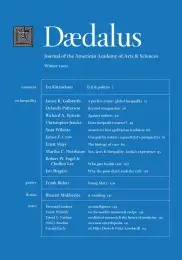America’s lost egalitarian tradition
Egalitarianism assumes many shapes in contemporary America: equality of opportunity, equality of rights, racial equality, sexual equality, equal justice, equal pay for equal work, and more. One egalitarian ideal is, however, conspicuously absent from most American public discussions: the ideal of equal wealth. Although complaints about economic inequality arise from the margins, the subject passes virtually unnoticed in our political debates. Apparently, most Americans find nothing unjust about gross disparities of economic resources, so long as every citizen is given a reasonable chance to prosper. Discrimination, prejudice, extreme poverty, and other enormities may endanger the stability and prestige of the republic (although there is intense disagreement about how much they do so anymore). Yet staggering inequalities of wealth, in and of themselves, pose no such threat in most Americans’ eyes.1
This was not always true.
At the time of the nation’s founding, Thomas Jefferson, the slaveholding democrat, famously decried the “numberless instances of wretchedness” that stemmed from gross inequalities of property. Jefferson recognized that “an equal division of property is impracticable.” Nevertheless, he observed (in a letter to James Madison) that “enormous inequality” produced “much misery to the bulk of mankind”–so much misery that “legislators cannot invent too many devices for subdividing property, only taking care to let their subdivisions go hand in hand with the natural affections of the human mind.”
Jefferson’s sometime friend and sometime antagonist, the Massachusetts conservative John Adams, agreed, noting that concentrations of wealth in the hands of the few ultimately bred tyranny over the many. “The balance of power in a society,” Adams wrote in 1776, “accompanies the balance of property in land.” Only by making “the acquisition of land easy to every member of society . . . so that the multitude may be possessed of landed estates,” Adams believed, could power be secured “on the side of equal liberty and public virtue.”
Similar formulations appeared throughout the infant republic, cutting across lines of party, region, and ideology. Noah Webster, the staunch Connecticut Federalist, claimed in support of the Federal Constitution in 1787 that “a general and tolerably equal distribution of landed property is the whole basis of national freedom,” and “the very soul of a republic.” A year later, a Virginia Anti-Federalist writing under the pseudonym “The Impartial Examiner” attacked the proposed Constitution precisely because, he contended, it would enable “a few men– or one–more powerful than all others,” to “obtain all authority, and by means of great wealth” to “perhaps totally subvert the government, and erect a system of aristocratic or monarchic tyranny in its room [that is, in its place].” There were, of course, exceptions, all along the political and social spectrums–thinkers who asserted that great economic inequalities between the few and the many were inevitable and even, some said, desirable. In general, however, Americans of otherwise clashing political beliefs agreed with one New Jersey cleric that, in a republic, “there should, as much as possible, be . . . something like an equality of estate and property.”
Though not unchallenged, and though open to conflicting interpretations, the conceptual basics of the egalitarian tradition lasted for a century after the Revolution. Ironically, the so-called consensus school of American historians of the 1940s and 1950s, focused as it was on the nation’s historical commitment to individualism and the sanctity of private property, largely ignored the once-prevalent commitment to economic equality. So have most subsequent historians, whether they have defended or attacked the consensus idea.
As a result, we have misunderstood some of the fundamental themes of American history from the Revolution through Reconstruction. And we have likewise misunderstood the complicated political legacy of those themes, from the late nineteenth century down to our own time. . . .
Access the full issue here.
